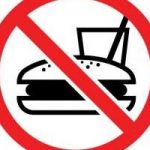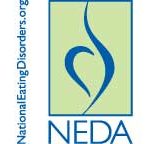Eating Disorders
Articles, Videos and treatment options for Eating Disorders
The term “eating disorder” encompasses a wide variety of abnormal behaviors that can present in a number of clinical pictures. One of the most basic ways to define “eating disorder” is as a cluster of abnormal eating habits associated with deranged thoughts or negative feelings. To define “eating disorder” adequately both psychological and clinical symptoms must be addressed.
Our overview of eating disorders can be found here. For the latest content, scroll down and select from the list.

Being obese puts individuals at an increased risk for many secondary health problems as compared to their normal weight counterparts. Obesity health problems are many and sadly, obesity is one of most prevalant risk factors for preventable causes of death. Obesity health problems can include increased blood pressure, increased cholesterol levels, increased risk of stroke, …
Read More

How can you tell if you have an eating disorder? Where can you go if you are saying to yourself, “I think I have an eating disorder?” Although the diagnosis of an eating disorder can only be made by a psychologist or other mental health or medical professional, there are warning signs that may indicate …
Read More

The logo of the National Eating Disorders Association (NEDA) is easily recognizable as a stylized heart which can also be interpreted as the outline of a female body. The heart demonstrates loving concern for those suffering from eating disorders and the female body represents diversity and acceptance of all body shapes and sizes. The fluid …
Read More

Eating disorder rehabilitation facilities offer professional treatment services for individuals diagnosed with an eating disorder. There are numerous rehab centers located in the US that can assist individuals with recovery, and also provide support to family members. Eating disorders such as anorexia and bulimia require specialized treatment in order to address the underlying causes of …
Read More

Although there is no official eating disorder recovery symbol, the logo for the National Eating Disorders Association (NEDA) is often used to symbolize recovery from one of these devestating disorders. The logo for NEDA is a simple design with swooping curves. As an eating disorder recovery symbol it is meant to remind people of the …
Read More

It may seem simple to define “eating disorder,” but the truth is that the term encompasses a wide variety of abnormal behaviors that can present in a number of clinical pictures. One of the most basic ways to define “eating disorder” is as a cluster of abnormal eating habits associated with deranged thoughts or negative …
Read More

Obesity among children has grown substantially over the past few years. It is estimated that between 16 and 33 percent of children and adolescents in the US are obese. Obese children are at risk of becoming overweight adults, increasing the probability that they will suffer from weight related illnesses such as type 2 diabetes, high …
Read More

There are limited reliable binge eating disorder statistics on the prevalence and incidence of Binge Eating Disorder (BED), a type of eating disorder not otherwise specified that is in the works to have its own diagnostic criteria in the next edition of the Diagnostic and Statistical Manual of Mental Disorders. According to the National Institute …
Read More

Approximately 60 million people in America today are affected by obesity. Economic and technological advancements in America have inadvertently resulted in a population that is at times, negatively affected by success. An over abundance of food has actually helped to create an obesity problem which is made worse by sedentary lifestyle choices and a hectic …
Read More
 Eating Disorder Self Test. Take the EAT-26 self test to see if you might have eating disorder symptoms that might require professional evaluation. All answers are confidential.
Eating Disorder Self Test. Take the EAT-26 self test to see if you might have eating disorder symptoms that might require professional evaluation. All answers are confidential.
Find a Treatment Facility Near You
Click on a state below to find eating disorder treatment options that could be right for you.









 Eating Disorder Self Test. Take the EAT-26 self test to see if you might have eating disorder symptoms that might require professional evaluation. All answers are confidential.
Eating Disorder Self Test. Take the EAT-26 self test to see if you might have eating disorder symptoms that might require professional evaluation. All answers are confidential.